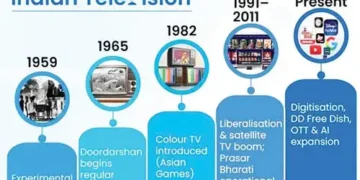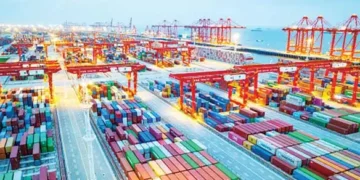 INDIA, 2025. A new generation of over 371 million young people, comprising a quarter of the country’s population, is preparing to enter a workforce transformed by technology. Every year, over 10 million graduates and diploma-holders, including 1.5 million engineers, leave their classrooms and face a difficult question: Will there be jobs for them? The rapid rise of artificial intelligence (AI) and automation poses a dualedged challenge. On the one hand, there’s the risk of jobs being replaced, especially for roles that involve repetitive tasks in manufacturing, IT, and even hospitality. On the other hand, AI is expected to create millions of new opportunities in fields such as data analysis, cybersecurity, and machine learning. Experts predict that AI will create 12 million more jobs than it will displace by the end of this year.
INDIA, 2025. A new generation of over 371 million young people, comprising a quarter of the country’s population, is preparing to enter a workforce transformed by technology. Every year, over 10 million graduates and diploma-holders, including 1.5 million engineers, leave their classrooms and face a difficult question: Will there be jobs for them? The rapid rise of artificial intelligence (AI) and automation poses a dualedged challenge. On the one hand, there’s the risk of jobs being replaced, especially for roles that involve repetitive tasks in manufacturing, IT, and even hospitality. On the other hand, AI is expected to create millions of new opportunities in fields such as data analysis, cybersecurity, and machine learning. Experts predict that AI will create 12 million more jobs than it will displace by the end of this year.
Striking a balance
So, how can India strike a balance and turn this demographic dividend into a lasting advantage? The country is betting on a multi-pronged approach that’s less about resisting change and more about harnessing it. India’s strategy focuses on empowering its massive workforce rather than fearing a future run by machines. The strategy thus needs to focus on: Investing in people-first industries: The Government is boosting key sectors that are less vulnerable to automation. The primary focus is on manufacturing, with initiatives such as the National Manufacturing Mission and the new Employment Linked Incentive (ELI) Scheme, aimed at creating 35 million jobs within two years.
Linking incentives to employment: New policies tie Government incentives for investors to the number of jobs they create. The ELI scheme, for example, provides financial support to companies for every new employee they hire, ensuring that technological advancements don’t come at the cost of jobs.
Upskilling the workforce: With only a small fraction of graduates considered ‘readily employable’, there’s a massive push for reskilling and upskilling. The country is focusing on training programmes in new fields, such as robotics, AI, and precision engineering. Using AI as a partner: The goal is to utilise AI and robotics for tasks that are hazardous or highly repetitive, while reserving jobs that require creativity, empathy, and personalised service for humans. This intelligent approach enables India to enhance its efficiency while maintaining the vitality of its service-driven sectors.
Power of creativity
Beyond strategic policy, India holds an influential ace up its sleeve: human creativity. This is one domain where AI and automation simply can’t compete. India’s creative industries, ranging from advertising to filmmaking and digital content, are experiencing significant growth.
Advertising that connects: From Fevicol’s iconic, culturally-rich campaigns to Amul’s witty billboards, Indian advertising succeeds because it’s rooted in human understanding and humour. AI can’t replicate that genuine connection. Stories that move us: India produces more films than any other country, and blockbusters like ‘RRR’ and ‘Gully Boy’ succeed because they are built on authentic stories and emotional performances, not just technology. New-gen creators: The rise of standup comedians, social media influencers, and animators proves that jobs centred on originality and emotional intelligence are not just surviving – they’re flourishing.
Ultimately, India’s challenge is not to fear the rise of AI. It’s to use it as a strategic tool for progress, balancing technological advancement with job creation. By nurturing its manufacturing and creative industries, prioritising skills development, and embracing its unique human advantage, India can emerge as a leader in both technology and employment, turning a wave of change into a tide of prosperity.
































